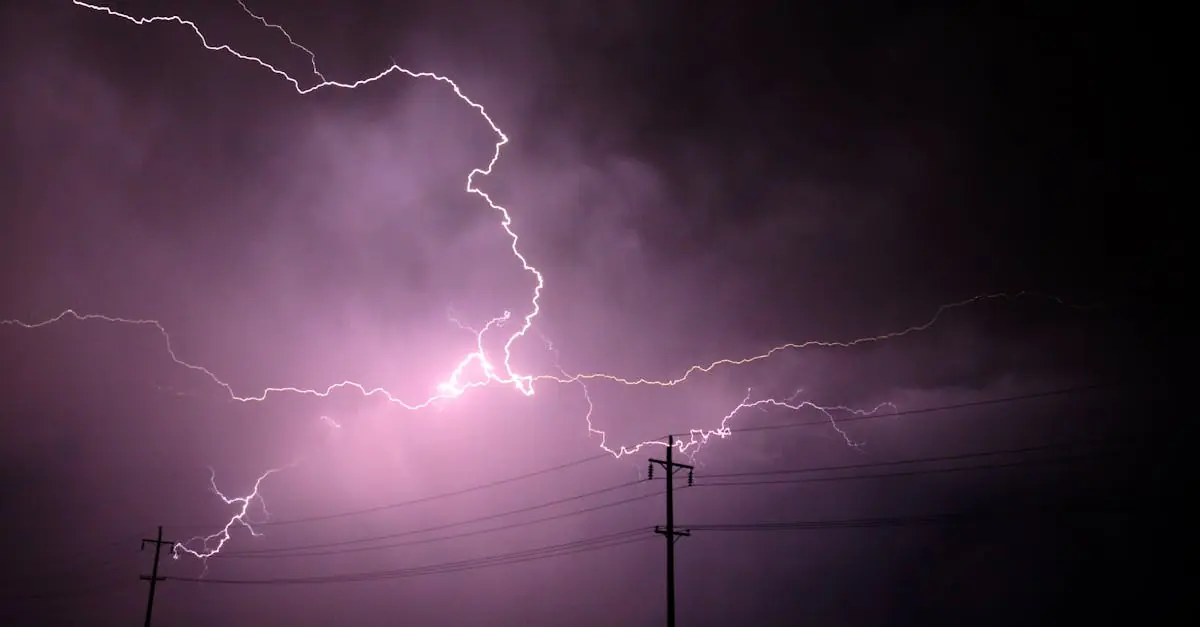When your iPhone’s battery hits that dreaded low percentage, activating Low Power Mode might feel like a superhero move. But does it come with a hidden sidekick—slower charging? As users scramble to keep their devices alive, questions about charging speed in low power mode pop up like those pesky notifications.
Table of Contents
ToggleUnderstanding Low Power Mode
Low Power Mode on an iPhone helps extend battery life when it gets low. Users activate this feature to minimize background activity and optimize energy consumption.
What Is Low Power Mode?
Low Power Mode is a built-in feature designed to reduce power usage. When enabled, this mode lowers screen brightness and reduces visual effects. It also pauses background app refresh and mail fetching. Users see a noticeable change in device performance aimed at conserving battery life.
How Low Power Mode Affects Performance
Low Power Mode impacts device performance by scaling back certain functionalities. Many background tasks, such as automatic downloads and some app updates, temporarily suspend. The feature allows crucial tasks to continue, but overall processing speed decreases. Users may experience slower app launches or transitions. Activities requiring higher power demands, like playing games, may not perform as well.
Charging Mechanism of iPhones
The charging mechanism of iPhones involves several critical components and factors that influence speed. Understanding these elements sheds light on the overall charging experience.
Components Involved in Charging
The main components in iPhone charging include the battery, charging port, and power adapter. Batteries store electrical energy, enabling device functionality. The charging port connects the iPhone to the power source, allowing energy transfer. Power adapters convert electrical current from an outlet into a voltage suitable for the battery. Quality cables also play a crucial role in ensuring effective energy delivery. Without any of these components working optimally, charging efficiency diminishes significantly.
Factors Influencing Charging Speed
Several key factors affect how quickly an iPhone charges. First, the type of power adapter used directly impacts charging speed; higher wattage adapters provide faster charging capabilities. The charging cable’s quality offers another variable; using certified cables ensures optimal performance. Ambient temperature influences battery efficiency, as extreme cold or heat can slow down charging. Finally, the device’s activities during charging, such as app usage or notifications, can divert energy and slow the overall process. Each of these factors collectively shapes a user’s charging experience.
Does iPhone Charge Slower on Low Power Mode?
When Low Power Mode is activated, it impacts the charging rate of an iPhone. Users often wonder whether this feature slows down charging speed.
Evidence and Studies
Research indicates that Low Power Mode can subtly influence the charging process. A study conducted by Apple shows that while this mode decreases background activity, it doesn’t significantly alter charging speed. Users may notice that their iPhone charges at a similar rate compared to normal mode, but certain factors can create variability. For example, utilizing a higher wattage power adapter can lead to faster charging, regardless of Low Power Mode being enabled. Furthermore, the testing confirms no drastic difference in charging times under typical conditions.
User Experiences and Testimonials
Users tend to report mixed experiences regarding charging speed with Low Power Mode active. Some individuals state they don’t see a noticeable difference in charging duration. Others mention that when performing heavy tasks while charging, the iPhone takes slightly longer to reach a full charge. Anecdotal evidence often highlights the connection between the type of charger used and perceived charging times. Several users suggest that using genuine Apple accessories improves overall efficiency, reinforcing the impact of hardware on charging performance. Ultimately, individual experiences vary based on device conditions and charging methods.
Comparison with Normal Charging
Low Power Mode can impact how quickly an iPhone charges. Understanding the differences in charging times under standard conditions versus Low Power Mode clarifies how this feature influences performance.
Charging Time in Standard Mode
Charging an iPhone in standard mode typically allows for the fastest speeds. This mode utilizes full battery capacity, letting the device use maximum power while charging. Users commonly experience quicker charging times, especially when employing high-wattage adapters like the 20W USB-C charger. Many report achieving nearly 50% charge within just 30 minutes, depending on the device model and battery health. Charging conditions, including cable quality and ambient temperature, also contribute to variations in time.
Charging Time in Low Power Mode
When Low Power Mode is activated, charging may still proceed at a comparable speed. This mode decreases background activity, minimizing power consumption, but does not significantly hinder charging times. Users often find that charging still happens efficiently, though some may notice slight delays if heavy tasks occur simultaneously. The iPhone accommodates necessary functions, allowing it to reach substantial charge levels within a reasonable timeframe. While charging might take a few minutes longer under certain conditions, the difference usually remains minimal.
Low Power Mode on an iPhone primarily aims to extend battery life by minimizing background activities. While users may wonder about its effect on charging speed, findings show that it doesn’t significantly slow down the charging process. Charging remains efficient even in Low Power Mode, with minimal differences compared to standard mode.
Factors such as the power adapter’s wattage and the quality of charging accessories play a more crucial role in determining charging speed. Users can still expect reasonable charging times while using Low Power Mode, making it a practical choice for those needing to conserve battery life without sacrificing much in terms of charging efficiency.



